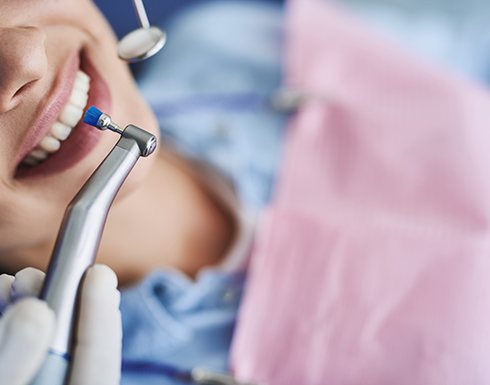Gum Disease Treatment – Morristown, NJ
Have Swollen or Bleeding Gums? Call Us

Your teeth deserve all the attention you give them, but you shouldn’t forget to take care of your gums as well. Poor oral hygiene can lead to periodontal disease (more commonly known as gum disease), which can result in unpleasant symptoms such as bleeding gums or – in the worst-case scenario – loose teeth that might end up needing to be extracted. While gum disease is a distressingly common issue, Dr. Henkin and the rest of our team can help you figure out the best method of gum disease treatment in Morristown if you give our dental office a call.
Why Choose Skyline Dental of Morristown for Gum Disease Treatment?
- Dental Practice That Prioritizes Comfort
- State-of-the-Art Dental Technology
- Early, Late, and Weekend Hours
What is Gum Disease?

Bacteria that affect the gums is known as gum disease – also commonly known as periodontal disease. When this problem occurs, immediate professional help must be provided, as the condition can worsen over time. Bacteria will attack the gums, causing bleeding, swelling, and redness to occur. Without timely treatment, gum pockets can form and more easily trap bacteria.
Our dental team is equipped to deliver the most advanced technological solutions to treat gum disease and reduce the chances of tooth and bone lone over time.
Symptoms of Gum Disease

Many symptoms point to gum disease, even if you’re unaware that you are already experiencing a problem. Just because you may not be in pain doesn’t mean that your mouth is completely healthy and free of harmful bacteria and particles. If you notice any of the following signs, do not wait to call our office for help.
- Gum recession that causes teeth to appear longer
- Tenderness and redness of the gum tissues
- Bleeding gums while brushing and flossing
- Swollen gums
- Misaligned bite that increases chances of wear and tear to tooth enamel and jaw pain
- Teeth feel looser than before
- Halitosis or significantly bad breath
How Do We Treat Gum Disease?

Skyline Dental of Morristown is pleased to provide two options for gum disease treatment – scaling and root planing and antibiotic therapy. When used together, they create a powerful combination that targets gum disease and improves oral health over time.
Antibiotic Therapy

One common side effect of gum disease is the formation of pockets between the teeth and gums. Bacteria can build up in these areas easily and cleaning them can be quite difficult. In many cases, the best option may be to apply an antibiotic directly to the gums. Over time, it will slowly seep down so that it can fight bacteria hiding at the bottom of the pockets. Antibiotic therapy is often used in conjunction with scaling and root planing.
Scaling & Root Planing

When you have gum disease, there’s likely to be a significant buildup of plaque and tartar hidden beneath your gumline. We can remove said plaque and tartar via a process called scaling and root planing. The scaling portion is similar to what you might experience during a routine cleaning, while root planing helps reduce the chances of future plaque and tartar accumulation by smoothing out the roots of the teeth.
Signs You May Need Scaling & Root Planing

Scaling and root planing is typically recommended when gum disease has progressed past the point of being able to be treated with good at-home oral hygiene. Typically, our team recommends this treatment when we notice the following symptoms:
- Small black triangles have formed between the teeth
- Gum recession
- Deep gum pockets
- Visible plaque and tartar accumulation
- Discomfort while chewing
- Chronic bad breath or a bad taste in the mouth
- Shifting teeth
These are all signs of the latest stages of gum disease, which require professional intervention to stop from progressing even further. Dr. Henkin will conduct a screening for gum disease during your routine checkup and cleaning in an effort to spot any signs as early as possible to minimize the need for more extensive treatment down the road.
The Scaling & Root Planing Process

Scaling and root planing is a two-step dental treatment that typically occurs over two separate visits. First, Dr. Henkin or your dental hygienist will thoroughly remove all plaque and tartar from the surface of your gumline, as far down as the pockets of your gums. Our team will then remove any hardened deposits of bacteria on the roots of the teeth, known as root planing. This will help the gums reattach to the teeth, providing the roots with crucial protection to prevent tooth loss. For some cases, we may recommend antibiotic treatment in combination with a deep cleaning.
Aftercare Tips for Scaling & Root Planing

Your mouth will likely be sore after your procedure, although you won’t feel any pain during it because your gums will be numbed. We recommend avoiding eating for at least two hours after your visit, or until the local anesthetic has completely worn off. For the next several days, rinse your mouth with salt water every few hours to help with discomfort and cleanse the area. This should be done in addition to brushing and flossing like you normally would, just be careful around the treated area.
